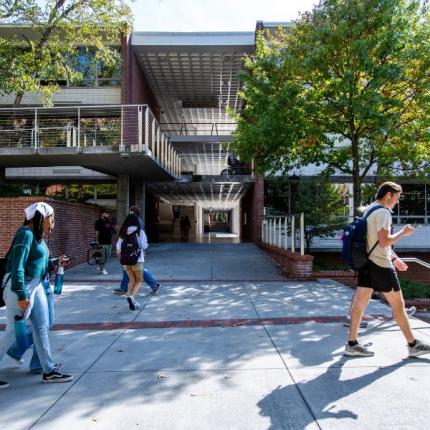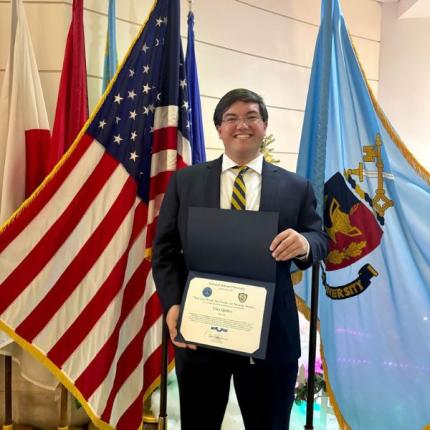International Affairs student Maya Orthous Inchauste is the only non-engineer in Georgia Tech's Infrastructure Research Group this year.
She works on a project examining how to better integrate community engagement into transportation agencies’ emergency and disaster management practices.
"Maya has made some wonderful contributions to identifying and defining disaster resilience problems and developing a tool to address them," said Adjo A. Amekudzi-Kennedy, the group’s director and a professor in the School of Civil and Environmental Engineering.
Why Community Engagement Matters
- As the planet experiences record-breaking heat waves and storms intensify, transportation systems must become more resilient to disasters, Orthous Inchauste said.
- Floods, snowstorms, cyberattacks, and other disasters can derail transportation systems — and people's ability to get where they need to go — if infrastructure agencies are unprepared.
- "If a disaster occurs and agencies continue to reflect upon and improve their resilience capabilities, they are more likely to reduce the negative impacts," Orthous Inchauste said.
Maya's Findings and Contributions
Orthous Inchauste's work is an excellent example of integrating STEM and liberal arts disciplines, showing how engineers and social scientists can benefit from a close scholarly relationship. She got involved through her research on institutional resilience with Professor Brian Woodall in the Sam Nunn School of International Affairs.
Orthous Inchauste worked closely with Adair Garrett, a Ph.D. student in transportation systems engineering.
They discovered that several transportation agencies plan for emergencies separately from stakeholder and community engagement efforts. This increases the potential for communication failures during emergencies, she said.
She also found that several agencies do not assess the effectiveness of their emergency management and stakeholder and community engagement efforts over time.
Orthous Inchauste translated concepts known as negotiated resilience into the development of a capability maturity model and self-assessment tool.
The tool will help agencies assess and improve emergency management and community engagement practices.
How It Works
The idea behind negotiated resilience is that public agencies actively work with various stakeholders — beginning with community members — in the disaster management planning phases and decide on the definition of resilience together.
When a disaster strikes, agencies return to these relationships to work with communities and other stakeholders to minimize consequences in future disasters. Afterward, they establish recovery pathways together.
When complete, the group's tools will enable transportation organizations to assess their emergency management, stakeholder engagement, and community engagement practices in one place. They will also help planners generate feedback on their organizations' resilience capabilities and suggest actionable steps for improvement while benchmarking their status for performance monitoring.
The group began testing the tool in the spring with transportation experts in Georgia, Texas, and Florida.
"In both normal and disaster contexts, we want to help transportation agencies engage the community in ways that minimize the consequences of a disaster while improving social quality of life for all," Orthous Inchauste said.






